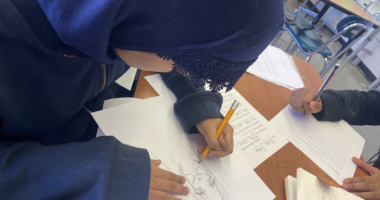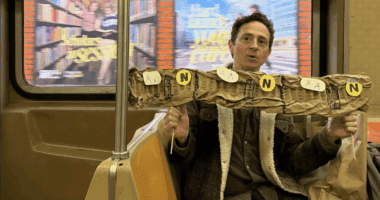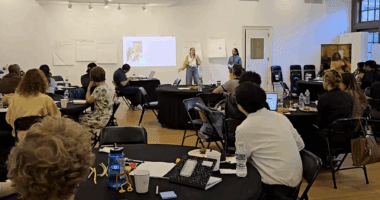As Teaching Artists in Community-Word Project’s Teaching Artist Training & Internship Program (TATIP), we have the immense, and often breath-taking privilege, of experiencing specialized professional development workshops with youth arts organizations all across the city. We recently found ourselves with Brooklyn Art Council and Marquis Studios, experiencing an inclusive-classroom model with Teaching Artists T. Scott Lilly and Hiromi Niizeki!
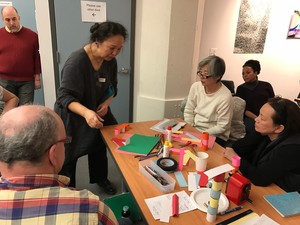
As trainers, Hiromi and Scott immersed us in the classroom experience, as though we were students ourselves.
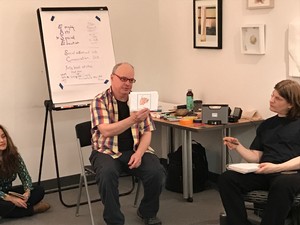
Our key takeaways, as we continue to build lesson plans for all kinds of classrooms, include:
- Role model what you want AND don’t want: students may not know how to follow directions that are only given verbally. Help students visualize what you mean.
- Use the body, gesture, and repetition of movement as a way to enable every student to be a performer.
- Emotional literacy: emotional justice is social justice. Pay attention to your students’ individual needs.
- Use visual cues (color, symbols, recognizable logos) in addition to verbal and gestural cues. Create an inclusive classroom.
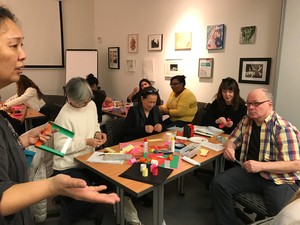
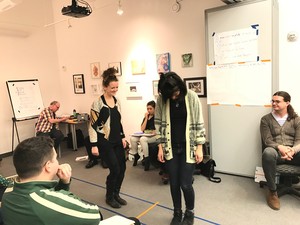
And always checking for the ABC’s of resistance when students are hesitant:
- Autonomy: Do students have choice? Invite students to cocreate activities by asking, “how else can we do that?”
- Belonging: Do students feel comfortable? We learned there is a gift in using multiple languages in any classroom setting. Let students use their native language and welcome all of who they are into the classroom.
- Capability: Are students able to do what they are being asked to do? Engage multiple intelligences and senses using a variety of rich materials for differing needs.
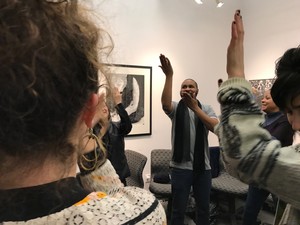

Classroom Applications:
Martha is currently interning in a special education classroom of 6 students and Kym is in an inclusive classroom of 30 students, both at PS 132 in Washington Heights. As part of our TATIP internships, we came together in one classroom to workshop some of the EASE techniques we learned with CWP at the Inclusive Practices in the Visual Arts and Introduction to EASE elective seminar. While the training points noted above seemed valuable for overall communication with students in any setting, we were excited to workshop them in a PS 132 inclusive classroom.

Focusing on writing revision, we created stations in the classroom that students moved among, as they tackled Synonyms (“juicy words” for their poems); Spelling; Meaning/Semantics; and ‘Sparkle’ – a space for artistic expression using glitter glue, confetti, and sparkles!

We used:
- Visual aids for directions. Each station had a major color associated with it, corresponding to flashcards made from laminated colored construction paper. We used a “Word Garden”, glitter, pencils, and the students’ own poems.
- Repetition and direct questions at the station, to clarify directions for students and ease their uncertainties.
- Kinesthetic active-learning. There was lots of physical movement around the room as students completed tasks. At the sound of the bell, they were all excited to move to the next station.

We continue to workshop what we learn in TATIP in our own classrooms, including with middle school students at Highbridge Green in the Bronx, and Bregy Elementary in South Philly. As we continue to grow as Teaching Artists, it is imperative that we challenge ourselves to be self-reflective, observant, and flexible as we create inclusive arts-based classrooms.

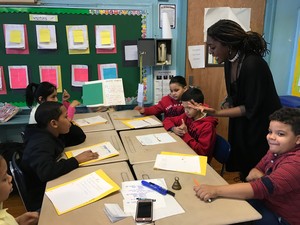
Within an inclusive classroom, Teaching Artists turn, “You have so much potential,” into infinite possibilities for self-actualization. Learning loves play and can be accessible to all. With patience, a little humor, and a passion to perform and transform students’ lives, Teaching Artists can make space in any setting for all their students. Just as teaching is to learning, our work is about motivating communication, collaboration, and understanding (between teacher and student, but also among students themselves). We work to build minds and cultivate strong relationships, sharing with each and enjoying the process as we make room for discovery.
-Kym Boyce & Martha O’Connell, TATIP 2016-17

